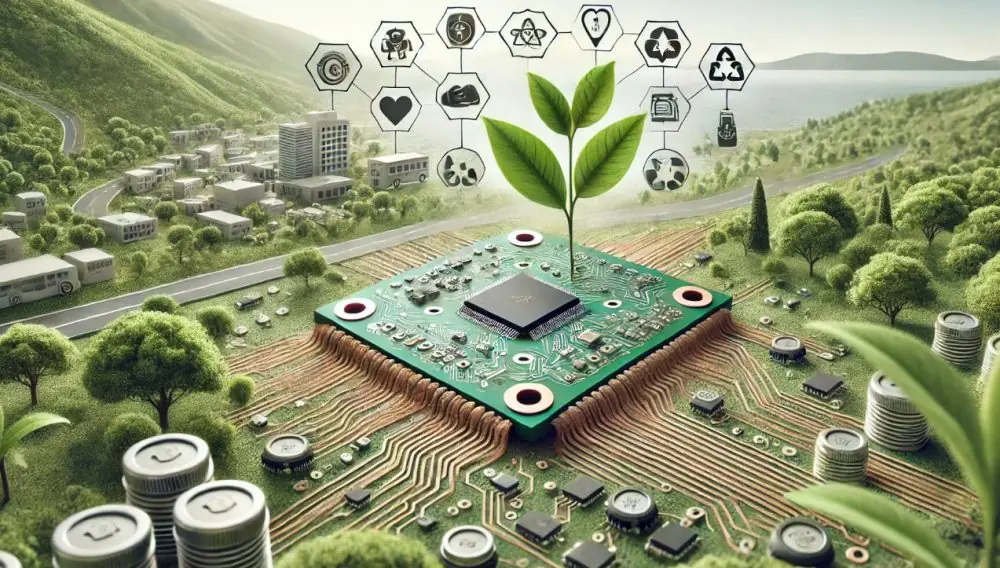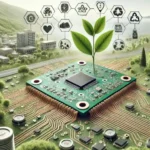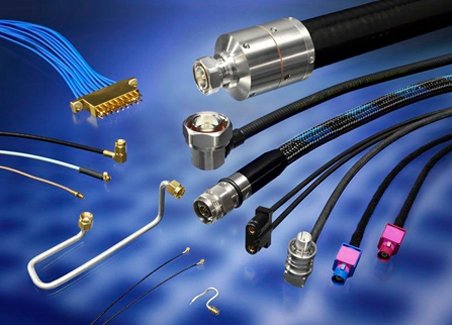Introduction
The world is facing a growing crisis of electronic waste (e-waste). With billions of electronic devices produced annually, discarded gadgets are piling up at alarming rates. At the heart of these devices lies the printed circuit board (PCB)—the foundation of modern electronics. Traditional PCBs, however, pose a significant environmental problem. This is where eco-conscious PCBs, designed to be recyclable or biodegradable, are reshaping the future of electronics.
Understanding PCBs
Printed circuit boards (PCBs) are the backbone of electronic devices, providing the necessary pathways for signals and power to flow. Typically made with fiberglass, epoxy resins, and copper, PCBs are sturdy and efficient but not environmentally friendly. Their complex mix of non-degradable materials makes recycling nearly impossible using conventional methods.
The Problem with Conventional PCBs
Conventional PCB production relies on hazardous chemicals like brominated flame retardants and heavy metals, which pose risks to both humans and the environment. When disposed of improperly, PCBs contribute heavily to toxic e-waste. Landfills become saturated with non-degradable materials, releasing harmful substances into soil and groundwater. Additionally, the energy-intensive production process of PCBs further increases the industry’s carbon footprint.
What Are Eco-Conscious PCBs?
Eco-conscious PCBs are designed with the environment in mind. Unlike traditional boards, these are created using recyclable or biodegradable materials. Their aim is to reduce waste, lower emissions, and support sustainable product lifecycles. Instead of persisting in landfills for centuries, eco-PCBs can either be dismantled for recycling or safely decompose without harming ecosystems.
Recyclable PCBs
Recyclable PCBs focus on making materials recoverable. Metals like copper, silver, and gold can be extracted, while substrates can be designed for reuse. These boards simplify disassembly and encourage circular economy models in electronics. By making PCBs recyclable, manufacturers can recover valuable resources, cut down raw material use, and minimize landfill waste.
Biodegradable PCBs
Biodegradable PCBs take sustainability a step further. Made with polylactic acid (PLA), hemp fibers, or other natural composites, these boards are capable of decomposing under natural conditions. They are particularly useful for low-power electronics such as sensors, medical implants, and disposable IoT devices. Instead of lingering for decades, they break down safely into organic matter.
Materials Driving Innovation
The development of eco-PCBs relies on advanced, sustainable materials:
- Polylactic Acid (PLA): A plant-based polymer derived from corn starch, offering biodegradability and strength.
- Natural Fibers (hemp, flax, jute): Used as substrates to replace fiberglass, providing strength while being eco-friendly.
- Water-Soluble Polymers: Allow easier recycling and controlled degradation.
- Eco-Friendly Conductive Inks: Replacing toxic metals with carbon-based or silver nanoparticle inks.
Manufacturing Processes
Eco-friendly PCB manufacturing focuses on minimizing toxic waste and energy use. Low-toxicity etching solutions replace harmful acids, while laser-based and additive manufacturing reduce chemical reliance. Cleaner production not only protects workers but also lowers environmental impact.
Performance vs. Sustainability
A common concern is whether eco-PCBs perform as well as conventional boards. While biodegradable materials may not yet match fiberglass in durability, advances in composites and coatings are closing the gap. Recyclable PCBs, on the other hand, retain performance levels while simplifying material recovery.
Applications of Eco-PCBs
Eco-conscious PCBs are already finding applications in:
- Consumer Electronics like smartphones and wearables.
- Medical Devices where biodegradable boards eliminate disposal risks.
- IoT Sensors for environmental monitoring.
- Renewable Energy Systems such as solar inverters and wind turbine controllers.
Challenges in Adoption
Despite the benefits, eco-PCBs face hurdles. Their production costs remain higher, limiting adoption in cost-sensitive industries. Some manufacturers are hesitant to switch due to performance concerns and supply chain adjustments. Scaling up eco-PCB production also requires infrastructure investment.
The Role of Regulations
Governments are stepping in with policies to tackle e-waste. Initiatives like the EU’s Waste Electrical and Electronic Equipment (WEEE) directive and India’s E-Waste Management Rules encourage manufacturers to adopt greener designs. Such regulations are accelerating the shift toward eco-conscious PCBs.
Future Trends in PCB Sustainability
The future looks promising for eco-PCBs. Innovations in AI-driven design, nanomaterials, and bio-based polymers will further enhance performance and sustainability. The electronics industry is steadily moving toward a circular economy, where components are reused and recycled endlessly.
How Businesses Can Transition
Businesses aiming for sustainability can adopt eco-PCBs by:
- Partnering with green-certified PCB manufacturers.
- Designing products with end-of-life recycling in mind.
- Educating consumers on eco-friendly electronics.
- Investing in R&D for biodegradable components.
Conclusion
Eco-conscious PCBs are not just a trend—they are the future of electronics. By embracing recyclable and biodegradable innovations, the electronics industry can drastically cut down on e-waste, lower environmental harm, and move toward a truly sustainable future. Transitioning may come with challenges, but the long-term benefits for both businesses and the planet make it a necessity.
FAQs
1. What makes a PCB biodegradable?
Biodegradable PCBs are made using natural fibers and bio-polymers like PLA that decompose naturally without leaving toxic residue.
2. Are eco-PCBs as durable as traditional PCBs?
Recyclable PCBs match conventional durability, while biodegradable ones are improving but may be more suited for short-term or disposable applications.
3. How can companies recycle PCBs?
By designing boards with recyclable substrates and using processes that allow easy recovery of metals and components.
4. Are eco-PCBs cost-effective?
Currently, they are more expensive than traditional PCBs, but costs are expected to decrease with wider adoption and better technology.
5. What industries benefit most from eco-PCBs?
Consumer electronics, healthcare, renewable energy, and IoT industries stand to benefit significantly from eco-conscious PCBs.





